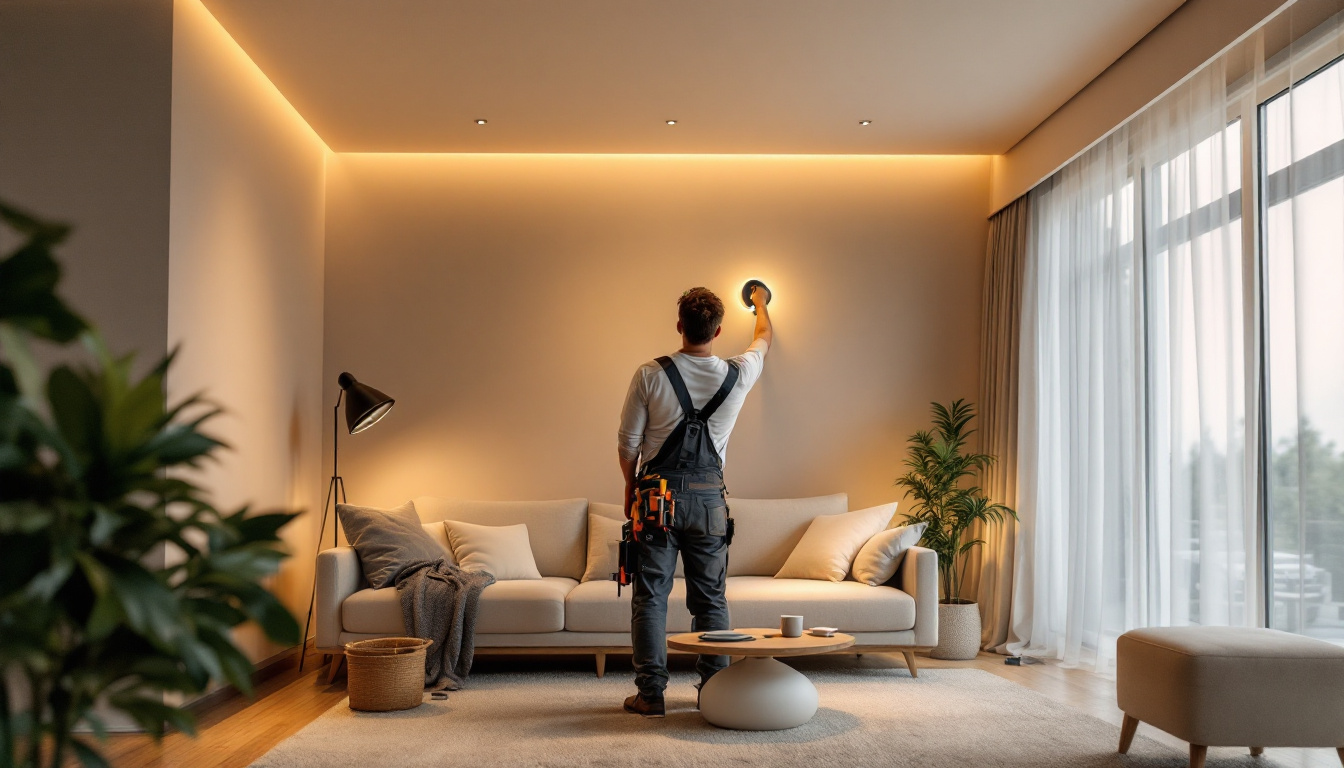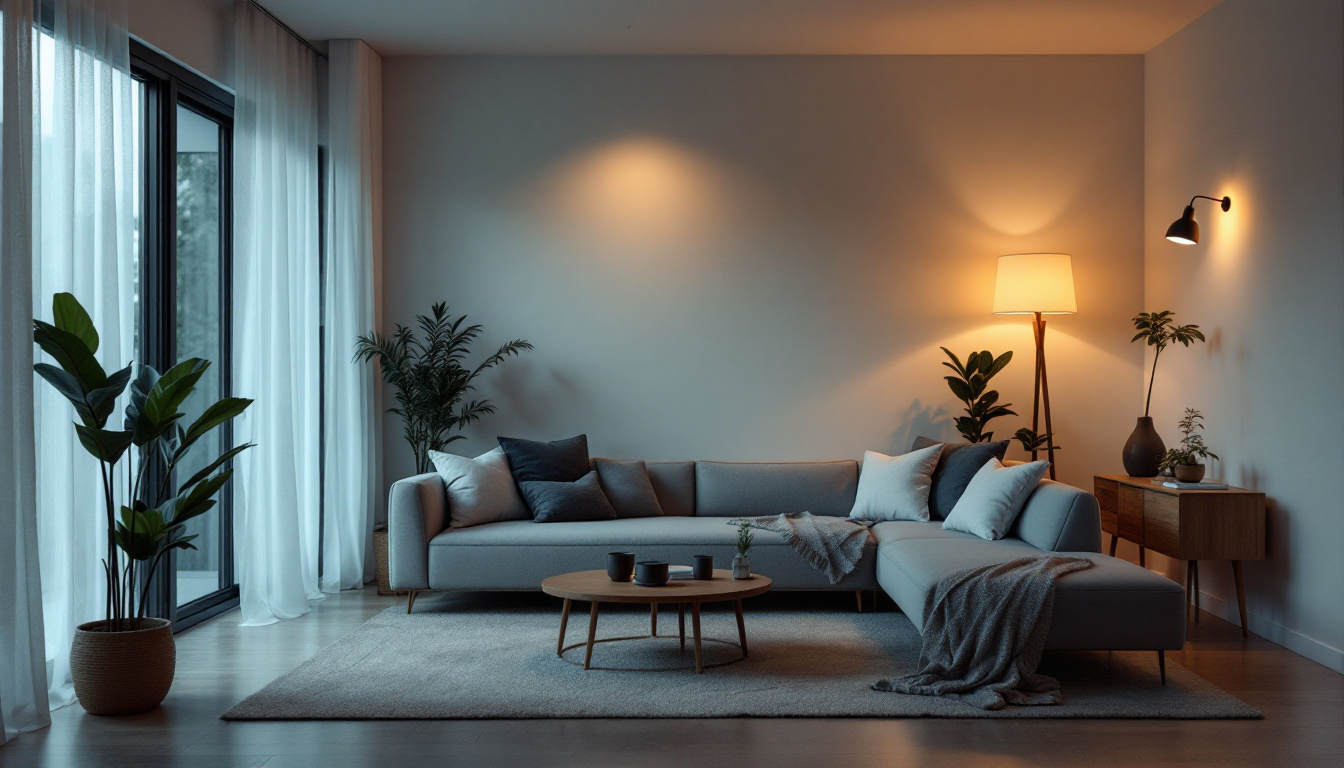
In the world of lighting design and installation, LED technology has revolutionized how spaces are illuminated. However, despite its advantages, many lighting contractors still make common mistakes when working with LED room lights. Understanding these pitfalls can lead to better installations, increased customer satisfaction, and ultimately, a more successful business. This article will explore the most frequent errors made by lighting contractors and provide insights on how to avoid them.
Before delving into common mistakes, it is essential to grasp the fundamentals of LED technology. LEDs, or Light Emitting Diodes, are energy-efficient light sources that have gained popularity due to their longevity and low energy consumption. However, the unique characteristics of LEDs require a different approach compared to traditional lighting solutions. Unlike incandescent bulbs, which generate light by heating a filament, LEDs produce light through a process called electroluminescence, where electrons move through a semiconductor material. This fundamental difference not only contributes to their efficiency but also allows for a variety of design possibilities that can enhance both functionality and aesthetics in various environments.
A significant aspect of LED lighting is its color temperature, which can dramatically affect the mood and functionality of a space. Many contractors mistakenly assume that all LEDs emit the same color temperature. In reality, LEDs come in a range of color temperatures, measured in Kelvin (K), from warm white (around 2700K) to cool daylight (above 5000K). Understanding this spectrum is crucial, as it allows for tailored lighting solutions that align with the specific needs of a space.
Choosing the wrong color temperature for a room can lead to dissatisfaction among clients. For instance, a warm white light is often preferred in residential settings for a cozy atmosphere, while cooler temperatures may be more suitable for workspaces. Additionally, different tasks may require distinct lighting; for example, a kitchen may benefit from bright, cool light to enhance visibility during cooking, while a bedroom should feature softer, warmer tones to promote relaxation. Contractors should always consult with clients about their preferences and consider the intended use of the space before making a selection. By doing so, they can create a harmonious environment that not only meets functional requirements but also elevates the overall aesthetic experience.
Another common mistake is overlooking the compatibility of dimming systems with LED lights. Not all dimmers work seamlessly with LED technology, and using an incompatible dimmer can lead to flickering, buzzing, or even complete failure of the lights. It is crucial for contractors to ensure that the dimmers they choose are specifically designed for LED use. This attention to detail can prevent frustrating issues that may arise post-installation, ensuring a smoother experience for both contractors and clients alike.
Furthermore, educating clients about the benefits of LED-compatible dimmers can enhance their experience. Offering options that allow for smooth dimming can significantly improve the ambiance of a room, making it more versatile and appealing. For example, in a dining area, the ability to dim the lights can create a romantic setting during dinner or a lively atmosphere during gatherings. Additionally, some advanced dimming systems offer features like remote control or smartphone integration, allowing users to adjust lighting with ease. By presenting these options, contractors can not only improve client satisfaction but also position themselves as knowledgeable professionals who understand the latest advancements in lighting technology.
Proper installation is critical for maximizing the lifespan and performance of LED lighting. Unfortunately, several common installation errors can compromise these factors.
One of the most frequent mistakes made by lighting contractors is improper placement of LED fixtures. The positioning of lights can greatly influence both functionality and aesthetics. For example, placing fixtures too far apart can lead to uneven lighting, creating shadows and dark spots in a room.
Contractors should take the time to plan the layout carefully, considering the room’s dimensions and the specific tasks that will be performed in the space. Utilizing lighting design software can aid in visualizing the placement and ensuring optimal coverage. Additionally, understanding the color temperature of the LEDs being used is crucial, as warmer tones can create a cozy atmosphere, while cooler tones may enhance focus and productivity. This nuanced approach to placement not only improves the visual appeal of a space but also enhances the overall user experience.
LEDs are known for their energy efficiency, but they still generate heat. Failing to account for heat management can lead to reduced performance and a shorter lifespan of the lights. Many contractors neglect to provide adequate ventilation for LED fixtures, particularly in enclosed spaces.
To avoid this mistake, contractors should ensure that fixtures are installed in well-ventilated areas and consider using heat sinks or other cooling solutions when necessary. This attention to heat management will not only prolong the life of the LEDs but also maintain their performance over time. Furthermore, it is essential to monitor the ambient temperature of the installation site, as extreme heat can exacerbate the issue. Implementing thermal monitoring systems can provide real-time data, allowing for proactive adjustments to be made. By prioritizing heat management, contractors can ensure that their installations remain efficient and reliable, ultimately leading to satisfied clients and reduced maintenance costs.
With the rapid evolution of LED technology, selecting the right products can be challenging. Contractors must stay informed about the latest advancements and trends to avoid common pitfalls.
One prevalent mistake is prioritizing cost over quality when selecting LED products. While budget constraints are a reality, opting for cheaper, lower-quality LEDs can lead to poor performance and frequent replacements. This not only frustrates clients but can also damage a contractor’s reputation.
Investing in reputable brands and high-quality products may come with a higher upfront cost, but the long-term benefits, including durability and energy efficiency, often outweigh the initial savings. Educating clients on the value of quality products can help justify these choices.
Another critical aspect to consider is the energy efficiency rating of LED products. Not all LEDs are created equal, and some may consume more energy than others despite being labeled as “energy-efficient.” Contractors should familiarize themselves with the Energy Star ratings and other efficiency labels to ensure they are recommending the best options.
By choosing products with high energy efficiency ratings, contractors can help clients save on energy costs while also contributing to a more sustainable environment. This not only enhances client satisfaction but also aligns with growing consumer preferences for eco-friendly solutions.
Effective communication with clients is vital in any project, and this is particularly true in lighting installations. Many contractors fall short in this area, leading to misunderstandings and dissatisfaction.
One common mistake is failing to set clear expectations with clients regarding the performance and appearance of LED lights. Clients may have preconceived notions about how LED lighting will look and function, which can differ from reality.
Contractors should take the time to explain the characteristics of LED lighting, including potential variances in brightness and color rendering. By setting realistic expectations, contractors can avoid disappointment and foster a more positive client relationship.
Another area where communication often falters is in post-installation support. Many contractors complete the installation and move on without offering guidance on how to operate or maintain the lighting system. This oversight can lead to confusion and frustration for clients.
Providing thorough instructions and being available for follow-up questions can enhance the overall experience for clients. Offering maintenance services or check-ins can also help ensure that the lighting continues to perform optimally over time.
The lighting industry is continually evolving, with new technologies and design trends emerging regularly. Contractors who fail to stay updated may miss out on opportunities to enhance their services and offerings.
smart lighting solutions have gained significant traction in recent years, allowing users to control their lighting through apps, voice commands, and automation. Contractors who overlook this trend may find themselves at a disadvantage compared to competitors who embrace these technologies.
Incorporating smart lighting options into installations not only appeals to tech-savvy clients but also adds a layer of convenience and customization. Contractors should invest time in learning about smart lighting systems and how to integrate them into their projects.
In addition to technological advancements, staying informed about design trends is crucial for lighting contractors. Clients often seek modern and stylish solutions that align with current aesthetics. Ignoring these trends can lead to outdated designs that do not resonate with clients.
Contractors should regularly explore design magazines, attend industry events, and engage with online communities to stay informed about the latest trends. This knowledge can help contractors provide valuable insights to clients and elevate their design proposals.
LED room lighting presents numerous opportunities for lighting contractors, but it also comes with its share of challenges. By understanding and avoiding common mistakes, contractors can improve their installations, enhance client satisfaction, and build a solid reputation in the industry.
From understanding the nuances of LED technology to ensuring proper installation and staying updated with trends, every aspect plays a crucial role in the success of lighting projects. By committing to continuous learning and effective communication, contractors can position themselves as trusted experts in the field, ultimately leading to lasting client relationships and a thriving business.
Ready to elevate your lighting installations and avoid common contractor pitfalls? LumenWholesale is here to support your success with our extensive range of high-quality, spec-grade lighting products. Enjoy unbeatable wholesale prices and the convenience of cutting out the middleman, ensuring you get the best value for your projects. With free shipping on bulk orders, you can stock up on reliable, high-performance lighting solutions without worrying about hidden fees. Make the smart choice for your business and explore our wholesale lighting options today, where quality meets affordability and convenience.

Discover the ultimate guide to LED high bay lights, exploring their benefits, applications, and how to choose the perfect lighting solution for your space.

Explore the transformative role of house lighting in today’s industry, highlighting innovative trends and the increasing demand for energy-efficient solutions that enhance both functionality and aesthetics in modern homes..

Discover the top challenges lighting contractors face when selecting the best solar landscape lights.

Discover expert insights and practical tips for lighting contractors on the latest LED light bulb flat designs.